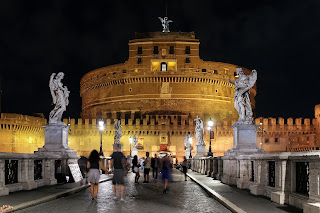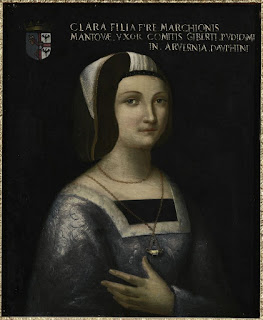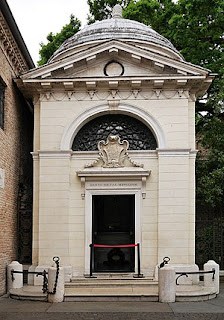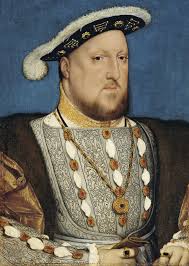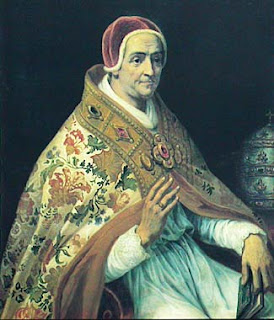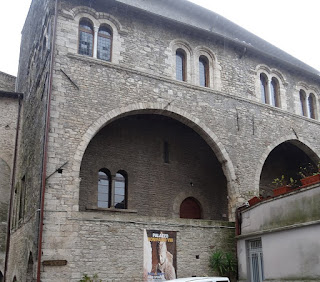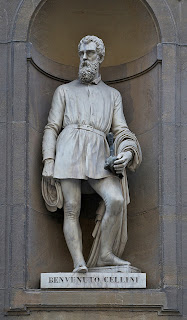Florentine soldier celebrated in Italy’s national anthem
 |
| Francesco Ferruccio's statue in the courtyard of the Uffizi in Florence |
A Florentine by birth, Ferruccio had been charged with leading the army of the Republic of Florence as the city came under attack during the War of the League of Cognac, when the Pope Clement VII connived with the emperor Charles V to overthrow the republic and restore power in Florence to his own family, the Medici.
Despite being outnumbered, Ferruccio’s soldiers engaged the Imperial forces at Gavinana, just outside Florence, killed their leader and drove them back, only for the enemy to be reinforced by the arrival of 2,000 German mercenaries under the leadership of the condottiero, Fabrizio Maramaldo.
His army almost annihilated, Ferruccio was taken prisoner and, despite being wounded, was stabbed in the throat by Maramaldo and bled to death, an act considered against the code of chivalrous conduct that honourable soldiers were expected to observe.
It was seen as so cowardly that the word maramaldo entered the Italian language as a noun with the same meaning as villain, while maramaldesco is an adjective used to describe someone as ruthless or villainous.
More than 300 years later, Goffredo Mameli, the poet and patriot, recalled Ferruccio in the lyrics of a song, Il Canto degli Italiani, that would later be adopted as the national anthem of the united Italy.
Also known as Inno di Mameli - Mameli's Hymn - and by its opening line Fratelli d'Italia - Brothers of Italy - the song cites a number of heroic figures and historical events that Mameli considered inspirational, particularly in the Italian fight for independence, Ferruccio’s defence of Florence being one of them.
 |
| Goffredo Mameli's anthem made its debut in 1847 |
ogn'uom di Ferruccio
ha il core, ha la mano
which is translated as
Every man hath the heart
and hand of Ferruccio
Scipio Africanus, the Roman general who defeated Hannibal at the final battle of the Second Punic War in 201BC, and Balilla, the nickname of a boy who started a revolt against the Habsburg forces in Genoa in 1746, are also part of Mameli’s narrative, along with the Battle of Legnano in 1176 and the uprising of 1282 known as the Sicilian Vespers.
Francesco Ferruccio began his working life as a merchant’s clerk and then a city official in Florence but was attracted by the idea of being a soldier and trained under Giovanni dalle Bande Nere, the Medici condottiero who would die in battle in 1526, ironically fighting on behalf of Pope Clement VII.
Appointed military commissioner by the Florentine Republic, which had been re-established in 1527, Ferruccio began the defence of Florence against Imperial ambitions by recapturing Volterra, which had been occupied by an Imperial garrison.
After Empoli fell to Imperial forces and Florence came under siege, Ferruccio proposed a march on Rome, threatening to sack the city if Clement VII did not agree to a peaceful settlement that would allow Florence to retain its independence.
But this plan was rejected as the Republican leaders opted for a more conservative approach. Ferruccio grouped his forces in Pisa only to be laid low with a fever for a month, finally engaging with the enemy at Gavinana, about 50km (31 miles) northwest of Florence.
His army was successful initially, driving the Imperial troops back and killing their leader, Philibert de Chalon, Prince of Orange, but was repelled when Maramaldo’s mercenaries arrived. Nine days after Ferruccio himself was killed by his cowardly rival, Florence surrendered.
 |
| Pistoia's octagonal Battistero di San Giovanni in the Tuscan city's medieval centre |
Gavinina is a village a short distance from Pistoia, a pretty medieval walled city in Tuscany, about 40km (25 miles) northwest of Florence. The city developed a reputation for intrigue in the 13th century and assassinations in the narrow alleyways were common, using a tiny dagger called the pistole, made by the city’s ironworkers, who also specialised in manufacturing surgical instruments. At the centre of the town is the Piazza del Duomo, where the Cathedral of San Zeno, which has a silver altar, adjoins the octagonal Battistero di San Giovanni in Corte baptistery. On the same square is the 11th century Palazzo dei Vescovi.
 |
| The historic walled town of Volterra southwest of Florence enjoys an elevated position |
The walled hilltop town of Volterra, some 65km (40 miles) southeast of Pisa and 52km (32 miles) southwest of Florence, is an enchanting place to visit which still has traces of its Etruscan history, including the city’s walls and the remains of an Etruscan Acropolis, and is much quieter than nearby San Gimignano, yet is just as appealing for its narrow medieval streets and its beautiful central square, Piazza del Priori. The Palazzo dei Priori, the town hall that stands over the square, contains medieval frescoes, while its bell tower offers expansive views. The Guarnacci Etruscan Museum has a substantial collection of artifacts.
Also on this day:
1486: The birth of famed Roman courtesan, Imperia Cognati
1546: The death of architect Antonio da Sangallo the Younger
1778: Milan’s opera house, Teatro alla Scala, is inaugurated



